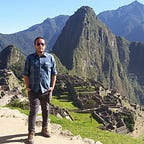Intangible Cultural Heritage: Oxherding and Oxcarts in Costa Rica
World Heritage is not only about monumental archaeological sites or beautiful natural places; heritage goes beyond material culture produced or built by people. Heritage is also about cultural practices, rituals, traditions, performing arts, meaningful places, oral histories, festivities and ancestral knowledge, which are a key part of any society in the world (UNESCO, 2017). These are all abstract elements of culture that give form to intangible cultural heritage, and they are at the same time vital components of cultural identity and social structures.
Intangible heritage represents several aspects of social life in a group or community, for example: internal ideology, interpretation of the world, appropriation of spaces, mythical and religious beliefs, ancestral practices, etc. In many cases, the reproduction of these cultural practices is the mainstay of the identity that a group or society has build through time. Hence, transmitting and teaching these cultural expressions to future generations becomes a central matter.
During the early 2000’s UNESCO has created several conventions to protect intangible cultural heritage, and it has emphasized the importance of community involvement in this process. “Since the 2003 Convention places a heavy emphasis on the representative character of intangible cultural heritage, the involvement of the communities concerned in its identification, inventorying and safeguarding was also stressed” (Smith and Akagawa, 2008, p. 59). Communities have a key role in the preservation of intangible heritage, and in how this heritage is reproduced through time and different generations.
Within this framework it is also necessary to understand how a community is defined by UNESCO’s terminology, and how communities build their identity based on this cultural essence:
“Community — ‘People who share a self-ascribed sense of connectedness. This may be manifested, for example, in a feeling of identity or common behaviour, as well as in activities and territory. Individuals can belong to more than one community’.” [Smith and Akagawa, 2008, p. 61].
A very good example of this relationship between community, intangible heritage and identity, is the example of Oxherding and Oxcart traditions in Costa Rica (Figure 1). This tradition was inscribed in 2008 on the Representative List of the Intangible Cultural Heritage of Humanity by UNESCO. The oxcart or “carreta” is one of the Costa Rican most famous crafted arts and it has been developed through history. During the mid-nineteenth century oxcarts were used for transportation of coffee beans from the mountains off to the coasts, they were also the only mean of transportation for working class families; so they represented specific social status as well. Painting and decorating these oxcarts became a tradition during the early twentieth century, and despite the fact that this was a nationwide tradition, particular styles and designs were developed in different regions (UNESCO, 2017).
There are two main factors that influence the continuity of the Oxherding and Oxcart tradition. The first factor is that oxcarts are not only a cultural expression of the Costa Rican people, but also oxcarts are one of the national symbols in Costa Rica. Oxcarts represent hard work, humility, patience, endurance and progress, so they were associated with the Costa Rican way of living since the early stages of the creation of this nation (Costa Rica Information, 2010).
The second factor is community involvement. All communities in every region of Costa Rica still get involved with this tradition, and they feel represented by the reproduction and preservation of oxcarts and oxherding. The process of designing, crafting, decorating and showing your oxcart, is a particular cultural practice that has been deeply embedded in Costa Ricans identity; this idea has been transmitted from one generation to another. Some communities for example, have established Oxherding and Oxcart parades. These parades create a platform for other cultural expressions, and they certainly represent common cultural spaces for these communities (Figure 2).
Cases like the tradition of Oxherding and Oxcart in Costa Rica show how important are intangible cultural practices for supporting the identity of a particular community, and a nation in general. Abstract elements of culture along with material culture are the central elements of heritage in any society; this means that only by ensuring protection and preservation of both tangible and intangible heritage, cultural identity can be maintained through time and future generations.
References
National Symbols. Costa Rica Information. (2010, May 16). Retrieved April 19, 2017, from http://costarica-information.com/about-costa-rica/people-culture-religion/culture/national-symbols
Oxherding and oxcart traditions in Costa Rica. Intangible Cultural Heritage, UNESCO. Retrieved April 22, 2017, from http://www.unesco.org/culture/ich/en/RL/oxherding-and-oxcart-traditions-in-costa-rica-00103
Smith, L., & Akagawa, N. (Eds.), 2008. Intangible Heritage. Key Issues in Cultural Heritage. Taylor & Francis.
What is Intangible Cultural Heritage? Intangible Cultural Heritage, UNESCO. Retrieved April 18, 2017, from http://www.unesco.org/culture/ich/en/what-is-intangible-heritage-00003
